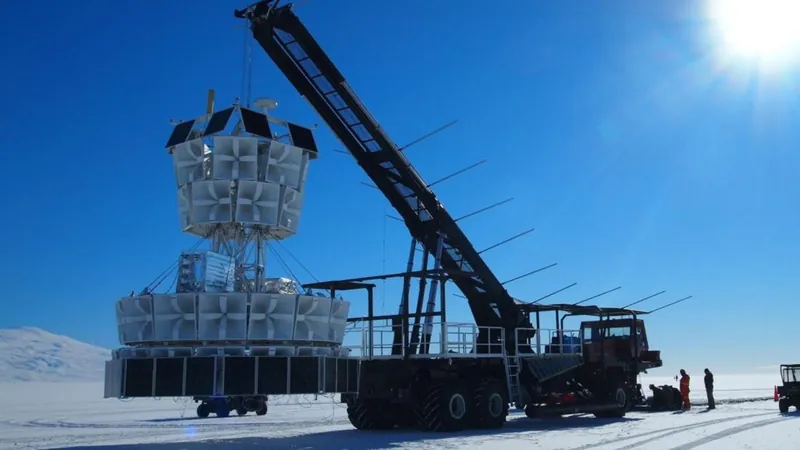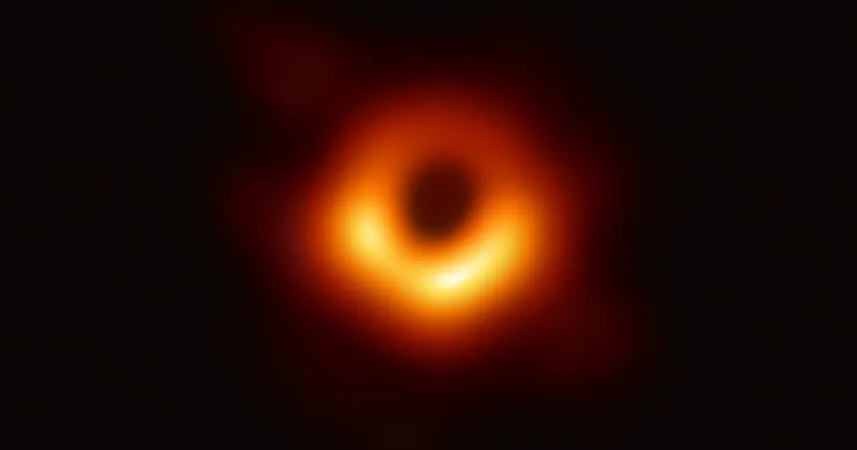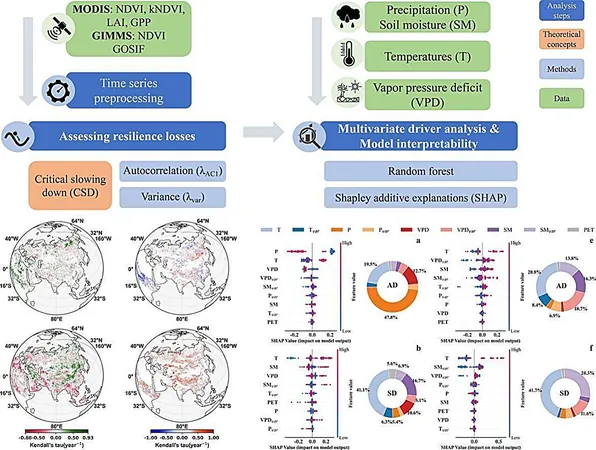
Mysterious Signals from the Depths of Antarctica Challenge Physics!
2025-06-16
Author: Emily
Unexplained Deep Signals Discovered!
In an astonishing twist, a balloon-borne experiment soaring over Antarctica has detected bizarre signals emanating from deep beneath the icy surface. These signals defy our established understanding of particle physics, prompting intrigue and speculation among scientists.
The ANITA Experiment: Beyond Its Original Purpose
The Antarctic Impulsive Transient Antenna (ANITA) is designed to capture cosmic radio waves using state-of-the-art radio antennas strapped to NASA balloons flying at altitudes of 19 to 24 miles (30 to 39 kilometers). However, recent detections of radio pulses rising from under 6,000 to 7,000 kilometers (3,700 to 4,300 miles) of solid rock have left researchers scratching their heads.
Physics Models Turned Upside Down
According to current particle physics models, these radio pulses should be completely absorbed by the rock, rendering detection impossible! Co-author Stephanie Wissel, a physics professor at Penn State, stated, "It’s an interesting problem because we still don’t actually have an explanation for what those anomalies are." In March, these riveting findings were published in the journal *Physical Review Letters*.
Hunting Neutrinos: The Quest Continues
The primary aim of the ANITA project is to glean insights into cosmic events by analyzing the signals that reach Earth. Central to this mission is the detection of neutrinos—elusive particles with no charge and the lowest mass of all subatomic particles. Neutrinos, originating from high-energy sources like the Sun or supernovae, are notoriously hard to detect.
How ANITA Works: A Look Inside
To uncover these tiny particles, ANITA looks for 'ice showers'—cascades of particles triggered by neutrinos colliding with surface ice. These interactions release radio signals detectable by the antenna. Furthermore, these neutrinos generate secondary particles known as tau leptons that lead to further emissions, called 'air showers.' By distinguishing between these emissions, researchers can trace the signals back to their origins.
The Mystery Deepens
However, the sharp angles of the detected signals suggested they couldn't originate from typical interactions with ice. An exhaustive analysis of multiple ANITA flights, paired with simulations of cosmic rays, indicated that other known signals were not to blame.
A Broader Search with Major Collaborations
To further probe this phenomenon, researchers collaborated with other leading neutrino detection experiments, such as the IceCube and the Pierre Auger Observatory. Disappointingly, no similar anomalies were found.
What Lies Ahead? Exciting Prospects!
Wissel's team is now working on a new, larger detector called the Payload for Ultrahigh Energy Observation (PUEO), aimed at enhancing neutrino detection capabilities. Wissel remains optimistic: "We're excited that when we fly PUEO, we’ll have better sensitivity. In principle, we should pick up more anomalies—maybe we'll finally uncover their nature, and potentially even detect neutrinos!"
Join the Mystery!
As we await the next phase of this groundbreaking research, one thing is for certain: the mysterious signals from the depths of Antarctica are a reminder that our understanding of the universe is still full of enigmas yet to be solved!









 Brasil (PT)
Brasil (PT)
 Canada (EN)
Canada (EN)
 Chile (ES)
Chile (ES)
 Česko (CS)
Česko (CS)
 대한민국 (KO)
대한민국 (KO)
 España (ES)
España (ES)
 France (FR)
France (FR)
 Hong Kong (EN)
Hong Kong (EN)
 Italia (IT)
Italia (IT)
 日本 (JA)
日本 (JA)
 Magyarország (HU)
Magyarország (HU)
 Norge (NO)
Norge (NO)
 Polska (PL)
Polska (PL)
 Schweiz (DE)
Schweiz (DE)
 Singapore (EN)
Singapore (EN)
 Sverige (SV)
Sverige (SV)
 Suomi (FI)
Suomi (FI)
 Türkiye (TR)
Türkiye (TR)
 الإمارات العربية المتحدة (AR)
الإمارات العربية المتحدة (AR)